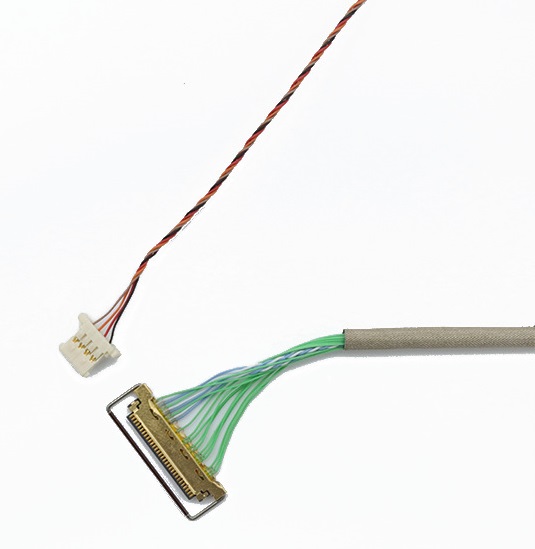How to extend the service life of EDP wire?
To extend the lifespan of an EDP (Embedded DisplayPort) cable, multiple aspects need to be considered, including proper usage habits, good storage conditions, regular maintenance checks, and reasonable purchasing decisions.

I. Understanding the Basic Characteristics of EDP Cables
EDP is a fully digital interface based on the DisplayPort protocol, used to connect displays to embedded systems or computer motherboards.
EDP cables feature fast transmission speeds, high signal quality, and support for high resolutions, making them widely used in industrial control, medical equipment, in-vehicle displays, and other fields.
II. Proper Usage Habits
1. Avoid Frequent Plugging and Unplugging
• Frequent plugging and unplugging of EDP cables can lead to wear and tear on the plugs and sockets, increasing the risk of poor contact. Therefore, when connecting devices, ensure a secure connection and avoid unnecessary plugging and unplugging operations.
2. Avoid Excessive Bending or Pulling
• Excessive bending or pulling of EDP cables can cause damage to the internal wires, even leading to breakage. When in use, avoid bending the cable into sharp angles or pulling it excessively, and maintain the natural curvature of the cable.
3. Pay Attention to the Usage Environment
• Avoid exposing EDP cables to harsh environments such as high temperatures, humidity, and dust. These environmental factors can accelerate the aging of the cable and reduce its lifespan.
III. Good Storage Conditions
1. Keep Dry
• Store EDP cables in a dry environment to prevent moisture from causing rust or corrosion to the internal metal parts.
2. Avoid High Temperatures
• High temperatures can accelerate the aging process of the cable, so store EDP cables in a place with suitable temperatures, avoiding prolonged exposure to high temperatures.
3. Avoid Direct Sunlight
• Ultraviolet rays from sunlight can damage the plastic protective layer of the cable, causing it to become hard and brittle. Therefore, avoid storing EDP cables in places directly exposed to sunlight.
IV. Regular Maintenance Checks
1. Inspect the Cable Appearance
• Regularly check the appearance of the EDP cable for signs of wear, breakage, or deformation. If any issues are found, replace the cable promptly.
2. Clean the Interfaces
• Use a clean, soft cloth to gently wipe the plugs and sockets of the EDP cable to remove dust and stains. Avoid using chemical cleaners that may damage the protective layer of the cable.
3. Check Connection Stability
• Regularly check the stability of the EDP cable connection to ensure that the plug is tightly connected to the socket without looseness or poor contact.
V. Reasonable Purchasing Decisions
1. Choose Reputable Brands
• When purchasing EDP cables, choose products from reputable brands. These brands typically have better quality control and after-sales service, providing more reliable product assurance.
2. Pay Attention to Cable Specifications
• Select the appropriate cable specifications based on actual needs. Cable specifications include length, wire gauge, transmission speed, etc. Choosing the right specifications can ensure the stability and reliability of the cable.
3. Check Product Certifications
• When purchasing, check if the product has passed relevant quality and safety certifications. These certifications can prove that the product meets certain quality standards and safety requirements.
VI. Other Considerations
1. Avoid Contact with Strong Magnetic Fields
• Strong magnetic fields can interfere with the signal transmission of EDP cables, affecting the display effect. Therefore, avoid placing EDP cables near strong magnetic fields.
2. Do Not Disassemble or Modify Arbitrarily
• Arbitrary disassembly or modification of EDP cables by non-professionals may lead to cable damage or inability to use normally. Therefore, when encountering problems, seek the help of professionals.
3. Follow the Product Manual
• When using EDP cables, carefully read the product manual to understand the usage methods and precautions. Following the product manual can ensure the proper use of the product and extend its lifespan.
In summary, extending the lifespan of an EDP cable requires consideration from multiple aspects. By adopting proper usage habits, good storage conditions, regular maintenance checks, and reasonable purchasing decisions, the lifespan of an EDP cable can be effectively extended, reducing replacement costs and improving work efficiency. At the same time, during use, attention should also be paid to avoiding contact with strong magnetic fields, not disassembling or modifying arbitrarily, and following the product manual to ensure the safety and stable use of the product.
